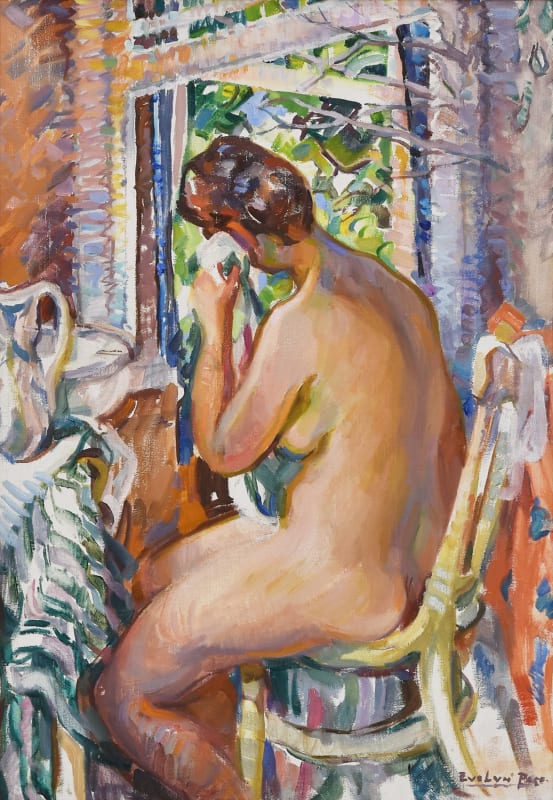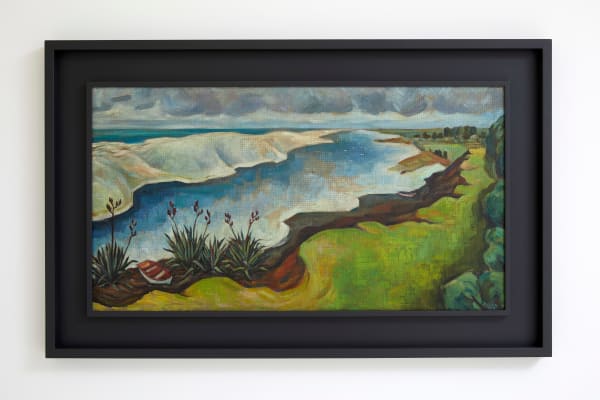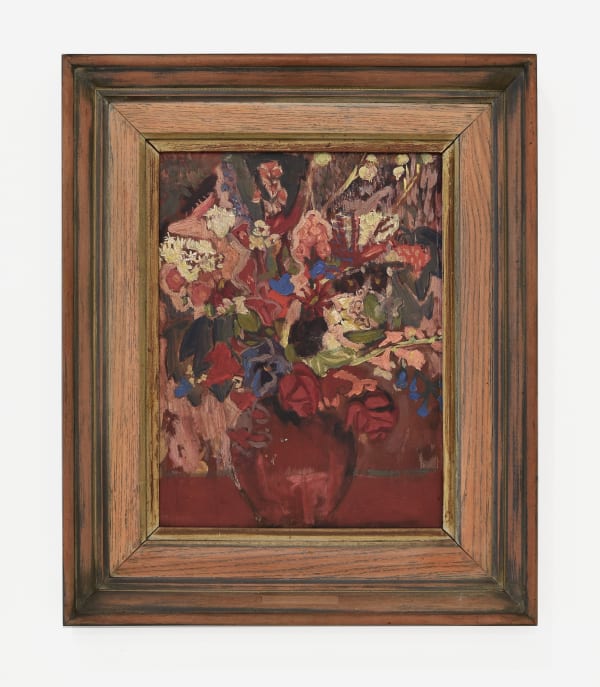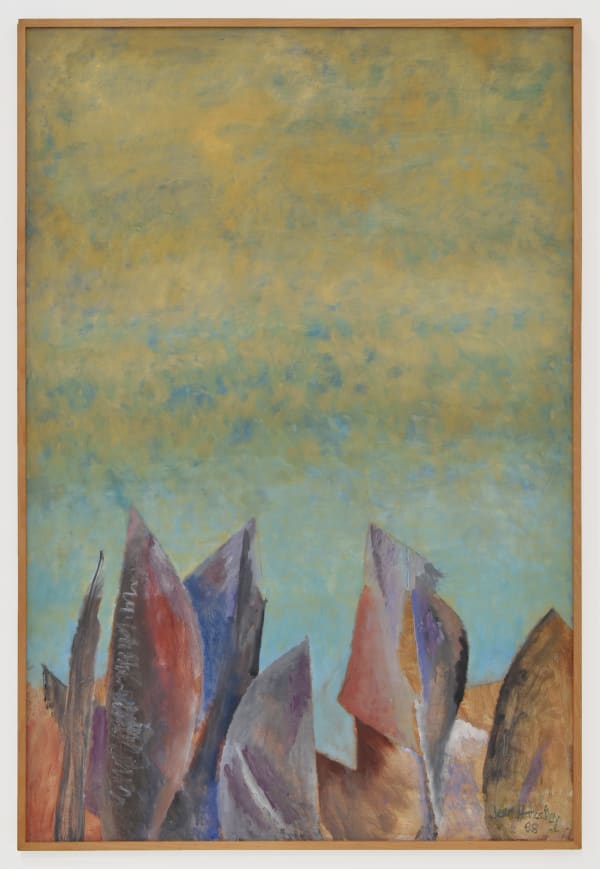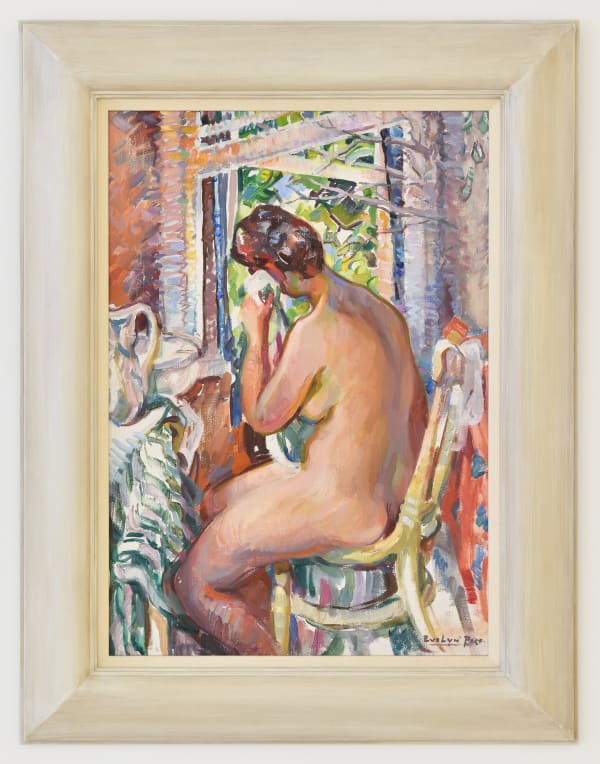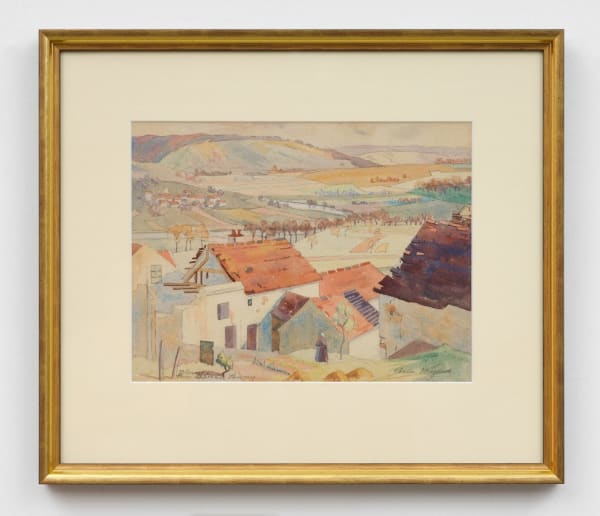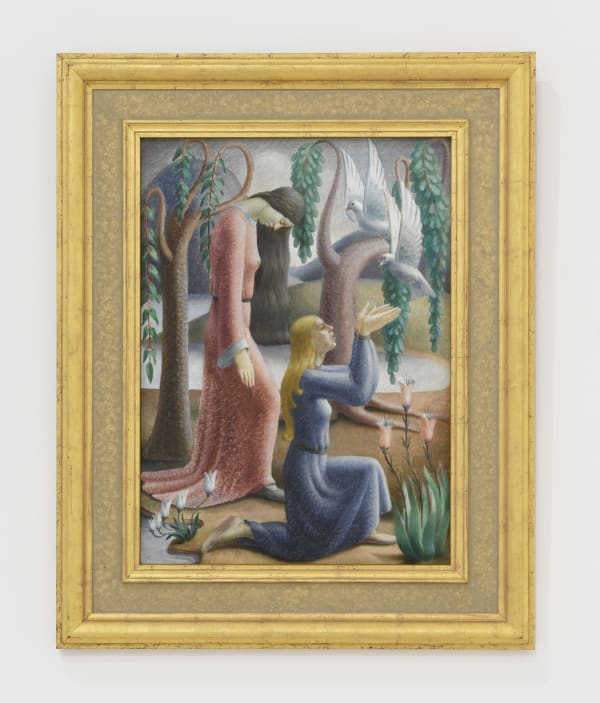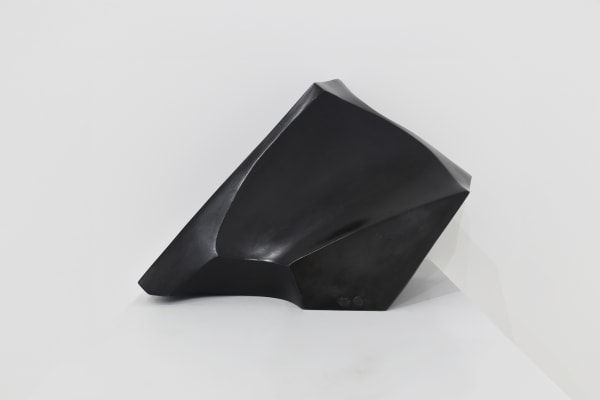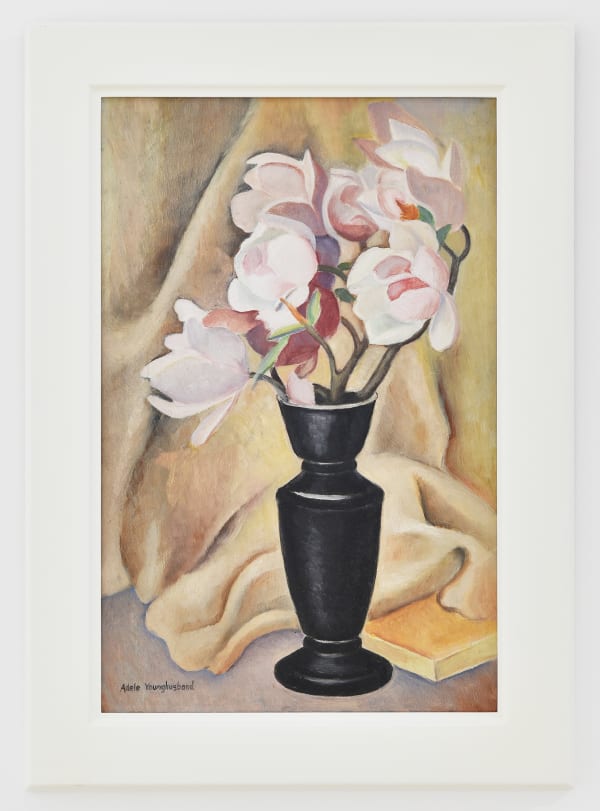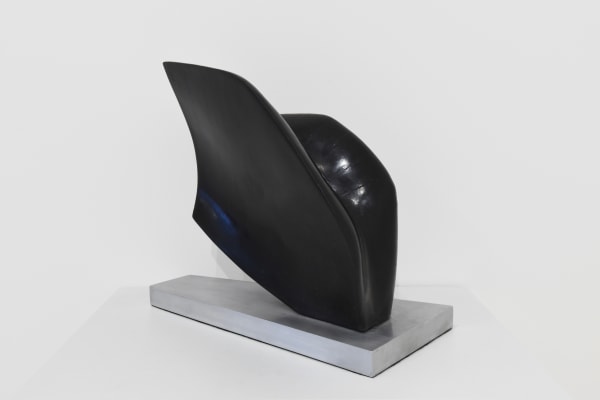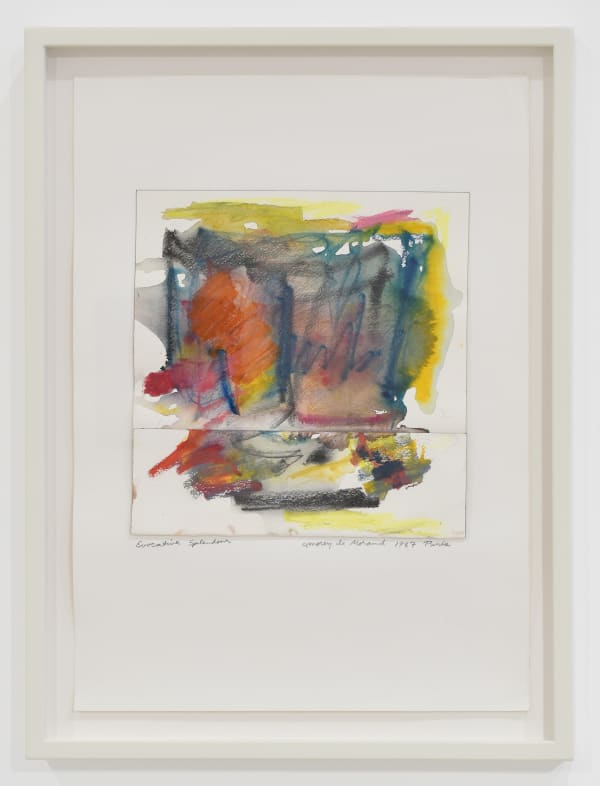Revisiting Modernism: Group Exhibition
Revisiting Modernism presents a selection of work by some of New Zealand’s best women modernists. It includes works by the most noted artists, Angus, Henderson, and Hodgkins, and some whose standing is increasingly acknowledged, such as A. Lois White, Adele Younghusband, and Jacqueline Fahey. It also makes room for revisiting the work of some figures who haven’t attracted much in the way of scholarship or acclaim, such as Ruth Browne and Gabrielle Hope.
By itself, Revisiting Modernism is far from being a panacea for historic under-representation of women in the arts. Yet, it is a step, and an acknowledgement of the importance of meaningfully addressing this imbalance.
-
 Lois White, Night Zephyr, c.1950
Lois White, Night Zephyr, c.1950 -
 Patricia France, The Flower Girl, 1991
Patricia France, The Flower Girl, 1991 -
 Gabrielle Hope, Still Life - Pumpkin and Gourds, 1957
Gabrielle Hope, Still Life - Pumpkin and Gourds, 1957 -
 Dame Louise Henderson, End of Winter, 1982
Dame Louise Henderson, End of Winter, 1982 -
 Gabrielle Hope, Still Life with Fruits
Gabrielle Hope, Still Life with Fruits -
 Ruth Browne, Blue Abstract, 1960
Ruth Browne, Blue Abstract, 1960 -
 Doris Lusk, Lagoon Rakaia Mouth, 1956
Doris Lusk, Lagoon Rakaia Mouth, 1956 -
 Anne McCahon (nee Hamblett), Flower Piece, 1939
Anne McCahon (nee Hamblett), Flower Piece, 1939 -
 Anne McCahon (nee Hamblett), Ruby Bay, c.1941-45
Anne McCahon (nee Hamblett), Ruby Bay, c.1941-45 -
 Jean Horsley, Kawau, 1988
Jean Horsley, Kawau, 1988 -
 Evelyn Page, Young Woman in Bay Window, 1982
Evelyn Page, Young Woman in Bay Window, 1982 -
 Helen Brown, Auckland Harbour, 1969
Helen Brown, Auckland Harbour, 1969 -
 Rhona Haszard, Blesmes near Chateau Thierry (The Marne Valley), c.1927
Rhona Haszard, Blesmes near Chateau Thierry (The Marne Valley), c.1927 -
 Adele Younghusband, Road Up Coromandel Peninsula, 1931
Adele Younghusband, Road Up Coromandel Peninsula, 1931 -
 Lois White, Tranquility, 1946
Lois White, Tranquility, 1946 -
 Tanya Ashken, Black Whole, 1998
Tanya Ashken, Black Whole, 1998 -
 Rita Angus, Hugh Spencer, 1963
Rita Angus, Hugh Spencer, 1963 -
 Jean Horsley, Abstract in the Round, 1988
Jean Horsley, Abstract in the Round, 1988 -
 Adele Younghusband, Magnolia
Adele Younghusband, Magnolia -
 Tanya Ashken, Sea Bird, 1964/2019
Tanya Ashken, Sea Bird, 1964/2019 -
 Jacqueline Fahey, The car as the erotic machine in the domain, or sacred and profane love, 1981 - 1982
Jacqueline Fahey, The car as the erotic machine in the domain, or sacred and profane love, 1981 - 1982 -
 Jacqueline Fahey, Grandma and Emily, 1992
Jacqueline Fahey, Grandma and Emily, 1992 -
 Colette Morey de Morand, Evocative Splendour, 1987
Colette Morey de Morand, Evocative Splendour, 1987 -
 Frances Hodgkins, Spring, c. 1909
Frances Hodgkins, Spring, c. 1909 -
 Frances Hodgkins, Portrait of Mrs Elizabeth Curtis, 1939
Frances Hodgkins, Portrait of Mrs Elizabeth Curtis, 1939 -
 Pauline Yearbury, Haka
Pauline Yearbury, Haka
“Every stroke I put down comes from real conviction and is a sincere aspect of truth if not the whole truth - If I can only live long enough the world will have to acknowledge me - I am horribly stubborn and haven’t lived these long years of privation and hard work for nothing.” [1]
Frances Hodgkins
From the 1890s through to the 1970s, modernism brought sweeping changes to society across the developed world. This was a dynamic reinvention of architecture, design, literature, and art that responded to new technologies, materials, and ways of thinking. Modernism is very well documented and works by notable modern artists are among the most prized in private and public collections here and abroad. Yet, the vast majority of widely recognised modernists are men.
When it comes to women modernists, New Zealand has a rich history. Frances Hodgkins and Rita Angus have quite rightly become household names, and recent years have seen greater acknowledgement of Dame Louise Henderson. While this is encouraging, many of these artists’ brilliant peers are almost unknown to the public. This is part of a broader pattern. Historically, the playing field in visual art has been very far from level. Women have been vastly underrepresented, and that historic bias has a continuing legacy. New Zealand has been socially progressive in a lot of ways. Famously, women won the right to vote in parliamentary elections in 1893 – making New Zealand the first nation in the world to enjoy universal suffrage. Though when it comes to representation and market share in art, gender imbalance has been troublingly persistent.
This was observed by writer Elizabeth Eastmond in a 1986 book she co-authored with Merimeri Penfold titled, Women and the Arts in New Zealand. Eastmond stated, “Although New Zealand was the first country to extend the franchise to women in 1893 it is interesting to note that society's attitudes remained out of step and exclusive in certain areas of the arts. For instance, women were not admitted to the Auckland Photographic Society until 1917, and attitudes could be extremely oppressive in other situations.” [2]
Recent years have seen a concerted effort to improve representation of women in public collections, major exhibitions, and gallery representation. This is a major win for art enthusiasts in New Zealand. Too many excellent artists in this country have not come to public attention on account of their gender, and this is particularly true of women artists of the 20th Century. Yet, there is still much to do in order to truly remedy historical imbalance. Kate Sheppard, New Zealand’s most well-known suffragette, famously stated, “Do not think your single vote does not matter much. The rain that refreshes the parched ground is made up of single drops.” In keeping with this, each exhibition or acquisition of work by women artists incrementally redresses the historic gap.
Revisiting Modernism presents a selection of work by some of New Zealand’s best women modernists. It includes works by the most noted artists, Angus, Henderson, and Hodgkins, and some whose standing is increasingly acknowledged, such as A. Lois White, Adelle Younghusband, and Jacqueline Fahey. It also makes room for revisiting the work of some figures who haven’t attracted much in the way of scholarship or acclaim, such as Ruth Browne and Gabrielle Hope.
By itself, Revisiting Modernism is far from being a panacea for historic under-representation of women in the arts. Yet, it is a step, and an acknowledgement of the importance of meaningfully addressing this imbalance.
[1] Frances Hodgkins to Rachel Hodgkins, 30 December 1918 in The Letters of Frances Hodgkins Edited by Linda Gill (Auckland: Auckland University Press, 1993. Page 338.
[2] Elizabeth Eastmond and Merimeri Penfold, Women and the Arts in New Zealand (Auckland: Penguin Books, 1986). N.p.
